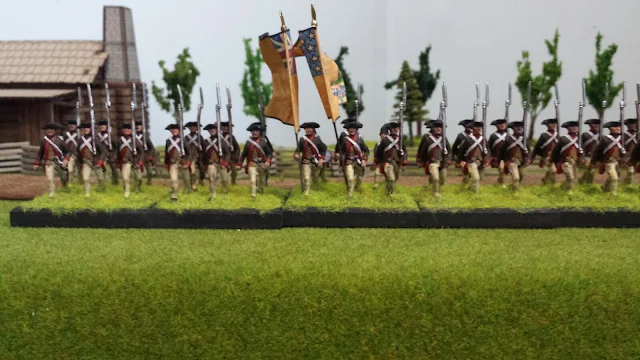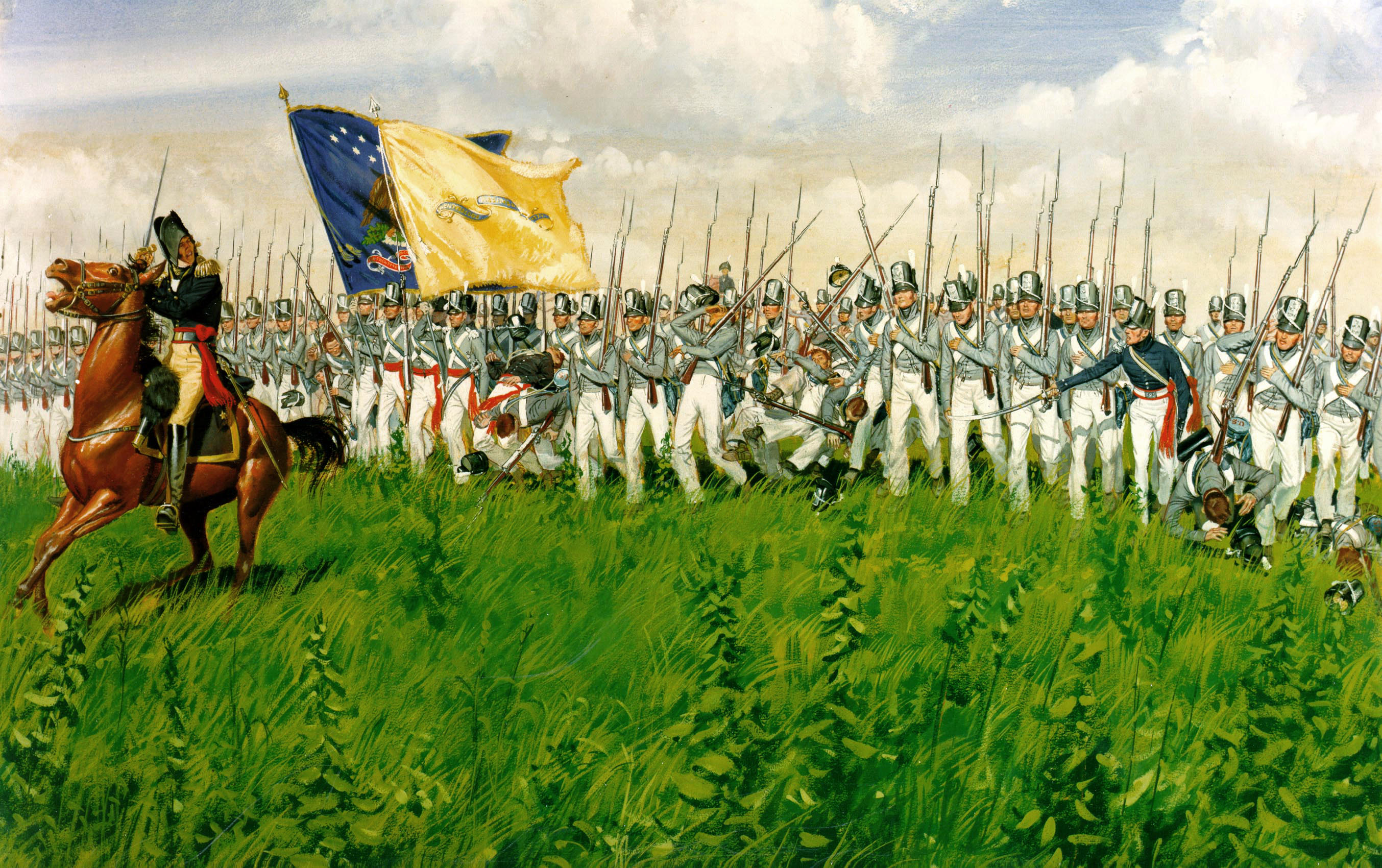At game night there were four of us who played this battle. Dave and Art played the British/Canadians while Mike and I commanded the Americans. Rules used were the Fife and Drum miniatures rules which I have adapted for War of 1812 and called "Fife and Drum met Mr Madison's war." All agreed they were easy to follow and provided a most excellent game. After the first turn everyone had picked up the rules and were playing the game rather then playing The rules.
The British regulars entered the board by the road on the north side. The 19th Light Dragoons provided cover while the Royal Artillery led the column followed by the 100th, 8th and 1st Regiments of Foot. Their Native warriors were deployed into the woods, but the Canadian Militia and British Light Infantry companies advanced in the open order along the fence line.
 |
| British deploying. |
 |
| 19th Light Dragoons covering British advance. |
The Americans had a company of the 21st Infantry regiment on picket duty by the Ussher farm house protecting Captain Towson's artillery battery. Scott's First Brigade (9th/11th, 22nd and 25th US Infantry) entered on the road on the south side of the table. They quickly headed towards the fence line to establish a defensive line. The Canadian Volunteers (
Canadians who supported the Americans) and Pennsylvania Volunteers slowly advanced in the woods with the Native Americans racing ahead of them.
 |
| Mind the sheep! |
 |
| Pennsylvania Volunteers and Canadian Volunteers. |
The American Dragoons, seeing the British Light Companies unsupported charged them. It did not go well and they were forced back with 50% casualties and shaken. During the charge the American Dragoons scattered a flock of geese in front of them to the amusement of all players. As they retreated one British player placed a geese running after the retreating cavalry!
 |
| Out of our way! |
 |
| Run away! Killer geese! |
While the 9th/11th and 22nd US Infantry took position along the fence line Captain Towson's battery took aim at the Light Dragoons and Royal Artillery. In a couple turns they decimated the crews and forced the dragoons to retire. The British deployed their regulars into line and advanced against the Americans with cold steel.
The Americans continued to pepper the advancing British with artillery fire while Scott prepared to defend the fence line. In the woods the Pennsylvania and Canadian Volunteers stopped floundering about marched to support their comrades in the open plain. Left alone in the woods both groups of Native warriors held an impromptu truce and promised to not fight at each other.
 |
| Native warriors wondering about in woods. |
 |
| Thirsty work boys? |
 |
| never mind those noisy boys. |
Once within musket range both sides opened fire. The British 100th Regiment was decimated by accurate artillery canister and musket fire (eight hits in one turn!). Still they passed their morale and charged in.
 |
| Charge! |
 |
| Friendly American goose gives British commander advice. |
In the fight along the fence line the British 100th Regiment was defeated and routed off the table. But the combined 1st and 8th Regiments defeated the 9th/11th US Infantry who retired in disorder. The British infantry climbed over the fence but now found themselves in great difficulty. The 8th had taken numerous hits and just barely passed morale. A fresh American Regiment, 25th US Infantry was in front of them. The Pennsylvania and Canadian Volunteers were advancing on their open flank. American reinforcements (two fresh infantry regiments) were advancing towards the fight and were within musket range . British reinforcements were too far away to get in to the fight, but within range of Towson's deadly guns.
 |
| Dice Mark casualties and red marker is shaken status. |
 |
| Killer geese not so brave flees the fight. |
 |
| Charge! Shaken hand of photographer due to excitment! |
 |
| High water mark of the British advance. |
 |
| With advancing Americans on all sides the British commanders decided to conclude the game. |
At this point the British commanders conceded the game. They felt that the two British regiments were about to be overwhelmed with no help possible. All agreed it had been a fast and fun game. Everyone also agreed the various items I placed about the field like animals (cats chasing mice, sheep and foxes) and civilians (woman bringing water to the troops, milking a cow and the farmer and his dog) were great fun and added visually to the game.
Thank you to Dave, Art and Mike for a fun and most enjoyable game. Next month at game night we go to the Crimean War 1854. Stay tuned!



























































